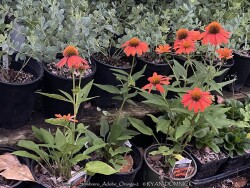


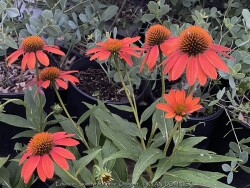
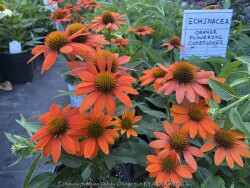
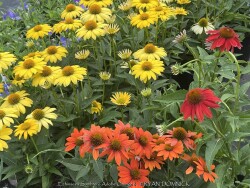
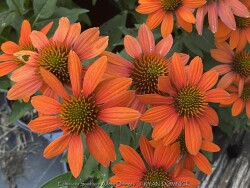
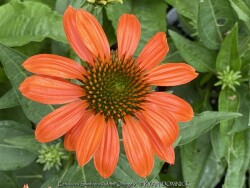
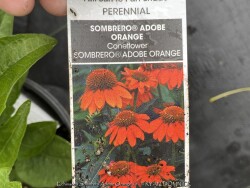
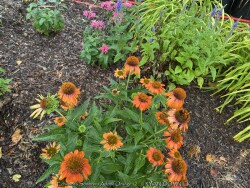
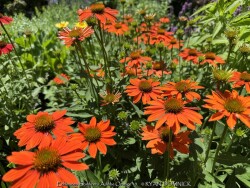
Plant Min Zone: 4a
Plant Max Zone: 8b
Sunlight: All Day Full Sun, Full Sun, Part Sun, Shade
Water / Rainfall: Low, Average
Soil Quality: Poor, Average, Rich
Bloom Season: Early Summer, Summer, Late Summer, Fall
Flower Color: Orange
Berry / Fruit Color: Orange, Black
Spring Foliage Color: Green
Summer Foliage Color: Green
Fall Foliage Color: Dark Green
Evergreen Foliage: No
Winter Interest: Some
Scented Flowers: No
Drought Tolerance: Medium, High
Wet-Feet Tolerance: Low, Medium
Humidity Tolerance: Low, Medium, High
Wind Tolerance: High
Poor Soil Tolerance: Rocky Soils, Sandy Soils, Shallow Soils, Clay Soils
Height: 2' - 3'
Width: 1' - 1.5'
Growth Rate: Medium
Service Life: Long: 5-10 years
Maintenance Need: Low
Spreading Potential: Medium
Yearly Trimming Tips: Trim Perennial to Ground in Early Winter After Hard Freezes: Some Winter Interest.
Plant Grouping Size: Small Grouping of 3-5, Medium Grouping of 5-10, Mass Planting of 10 or more
Best Side of House: South Exposure, West Exposure, East Exposure
Extreme Planting Locations: Survives Severe Drought, Tolerates Extreme Heat, Top of Retaining Wall Locations
Ornamental Features: Multiple Seasons of Interest, Long Blooming Season
Special Landscape Uses: Naturalizing
Possible Pest Problems: Rabbits, Root Rot Disease, Beetles, Foliage Disease
Plant Limitations: None
Shippable in 2026: YES
***Description for this perennial available with future update!*** Echinacea 'Sombrero Adobe Orange' is also known as Sombrero Adobe Orange Coneflower >>>>>>>>>>>> Echinacea purpurea is an herbaceous perennial native to parts of eastern and midwestern United States most common in Missouri and Arkansas. Its habitats include dry open woods, prairies and barrens. Echinacea are native to North America, featuring sunflower-like flowers with a dark center and colorful petals. Colors on native plants include purple, magenta, white, yellow. Intensive breeding efforts to fish out recessive genes have brought bright orange and red into the picture. Flowers occur in early to mid summer often continuing into fall especially if dead-headed. Its individual flowers (florets) within the flower head are two-toned, having both male and female organs in each flower. (hermaphroditic) Bees and butterflies including the monarch are common pollinators. The dead flowers are attractive to some for winter interest but for those wanting a tidy your garden, they can be trimmed early. Leaving some dried seed heads will be beneficial for wildlife and provide winter food for finches and other birds. Best growth generally occurs in full to part sun with well drained soils with low to average moisture. In Eastern Kansas, typically our 40 inches of rainfall is sufficient without extra water. Coneflower can also handle short one to two day flooding events and are sometimes used along the higher perimeter of rain gardens to bring in pollinators. Coneflower mixes well with many other types of plants ranging from other native plants to evergreens to hardy tropicals. Rabbits can be a problem young immature plants. A popular method of control is covering the plant with an upside down bowl-shaped chicken wire cage for the first year to allow basil foliage to establish well. You can quickly make these yourself with a low cost roll of chicken wire. Mature plants especially in groups with other mature landscaping generally do not have rabbit problems. Flowers are also popular in the florist industry as cut flowers or in the cottage garden. The genus echinacea has undergone intense breeding with the introduction of hundreds of new cultivars in the last 10 years.